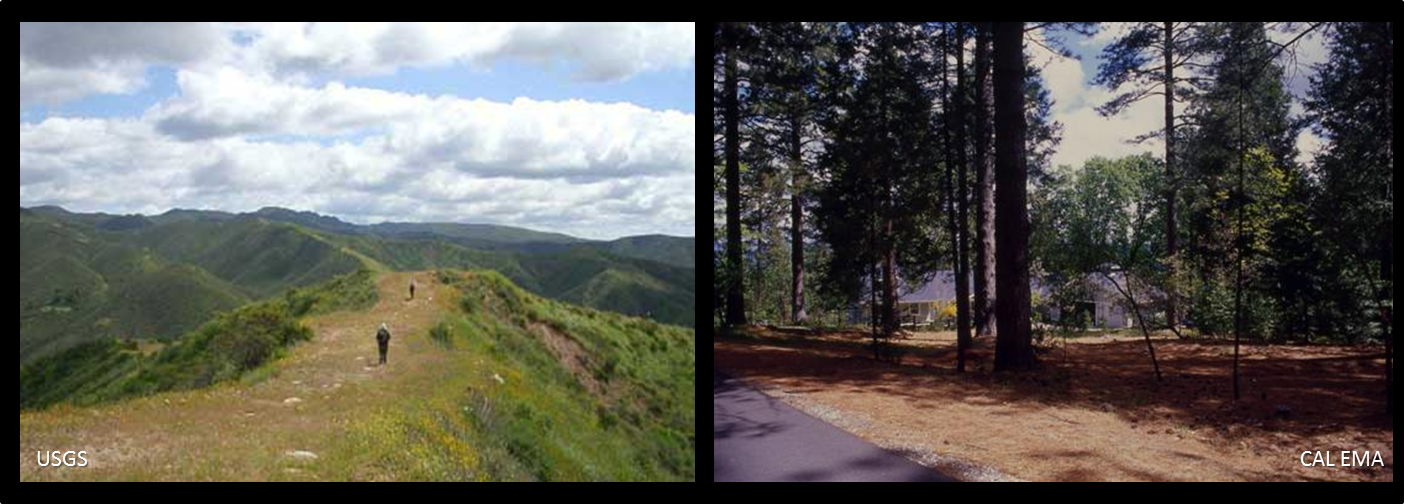The practice of hazardous fuel reduction is most often associated with moderating the flammable vegetation around the defensible space of individual homes and communities. But this proactive approach to fighting wildland fire comes in many other forms and, unlike fire-fighting in most areas, is a year-round practice.

Ridgeline fuel break example on the left and a road brushing/shaded fuel break on the right.
The basic function of a fuel-break is to impose some obstacle to the spread of potential fire, and also to provide access to the fire should one break out. Fuel breaks are designed to change the behavior of a wildfire by reducing the quantity, density, and configuration of potential fuels that the fire encounters when it enters the fuel break.
Breaks are constructed for a number of purposes:
- To act as a barrier to control the spread of a fire to a particular area or property.
- To contain the spread of a fire from a fire source.
- To break up large fuel areas (i.e. where fire may spread rapidly or be difficult to control, a system of firebreaks is sometimes established to aid in confining the fire to a relatively small area).
- Reduce a crown fire to a fire burning on the ground.
Fuel Breaks are most effectively located in the following areas:
- Along ridges, where fires naturally slow their progress under most conditions.
- 100 feet to 200 feet around structures, where fires are likely to start.
- Along roads, power lines, and pipelines, where openings already exist.
- Around wet areas, rock outcrops, mined areas, and other topographically strategic locations where fire spread may be reduced.
- Adjacent to areas where fuel reduction treatments, such as thinnings and surface fuel treatments, have already been performed, where fire intensity and spread are already reduced.
- Connecting to existing fuel breaks, to expand protected areas in a systematic way.
Natural Resources Conservation Service (CA) – Code 383
![]()



